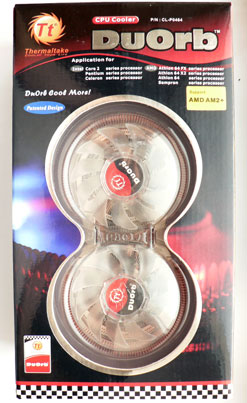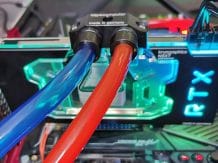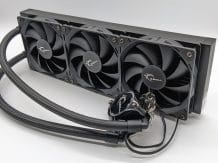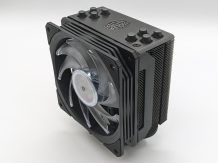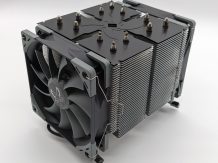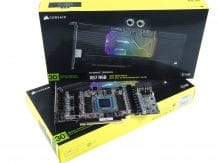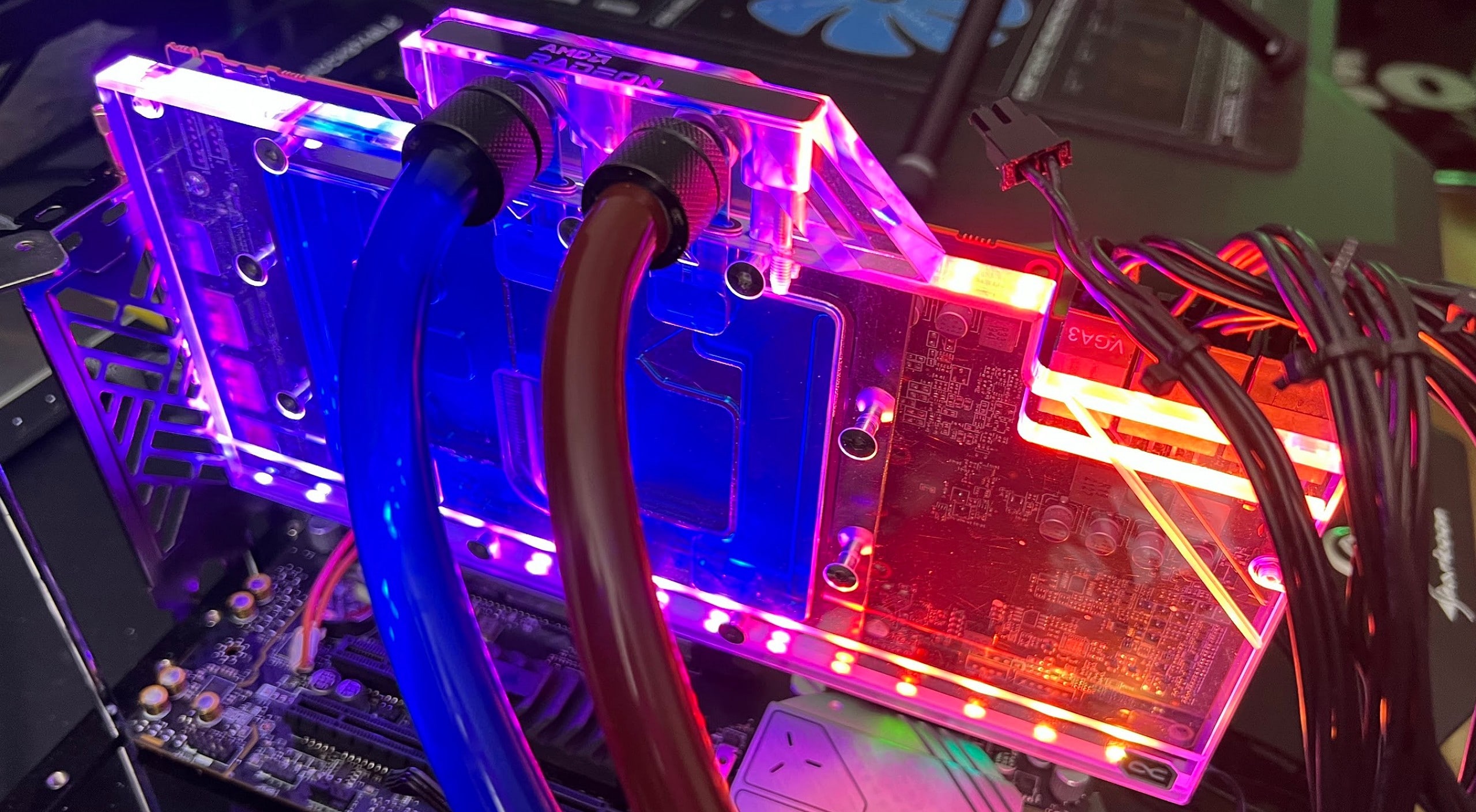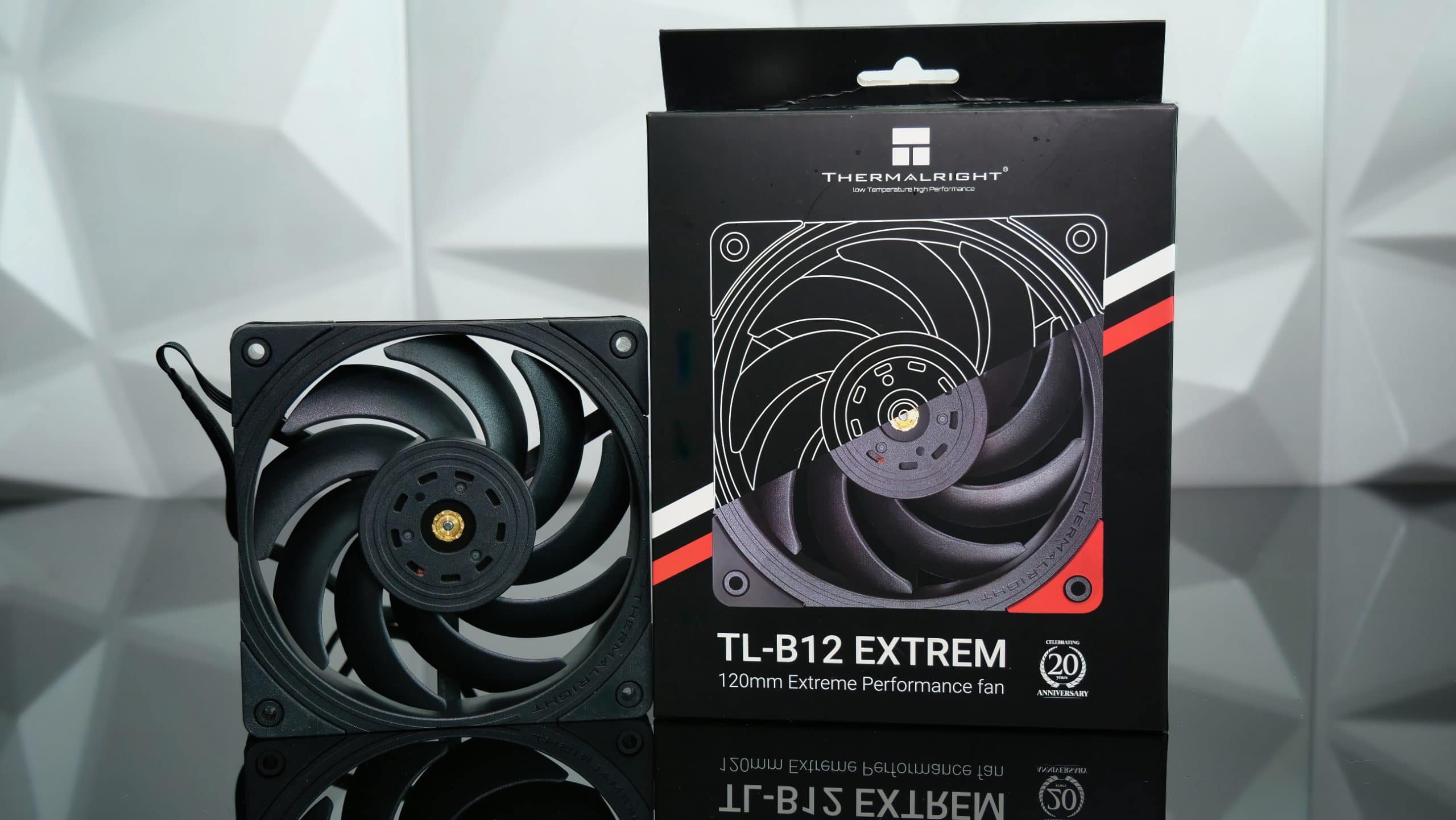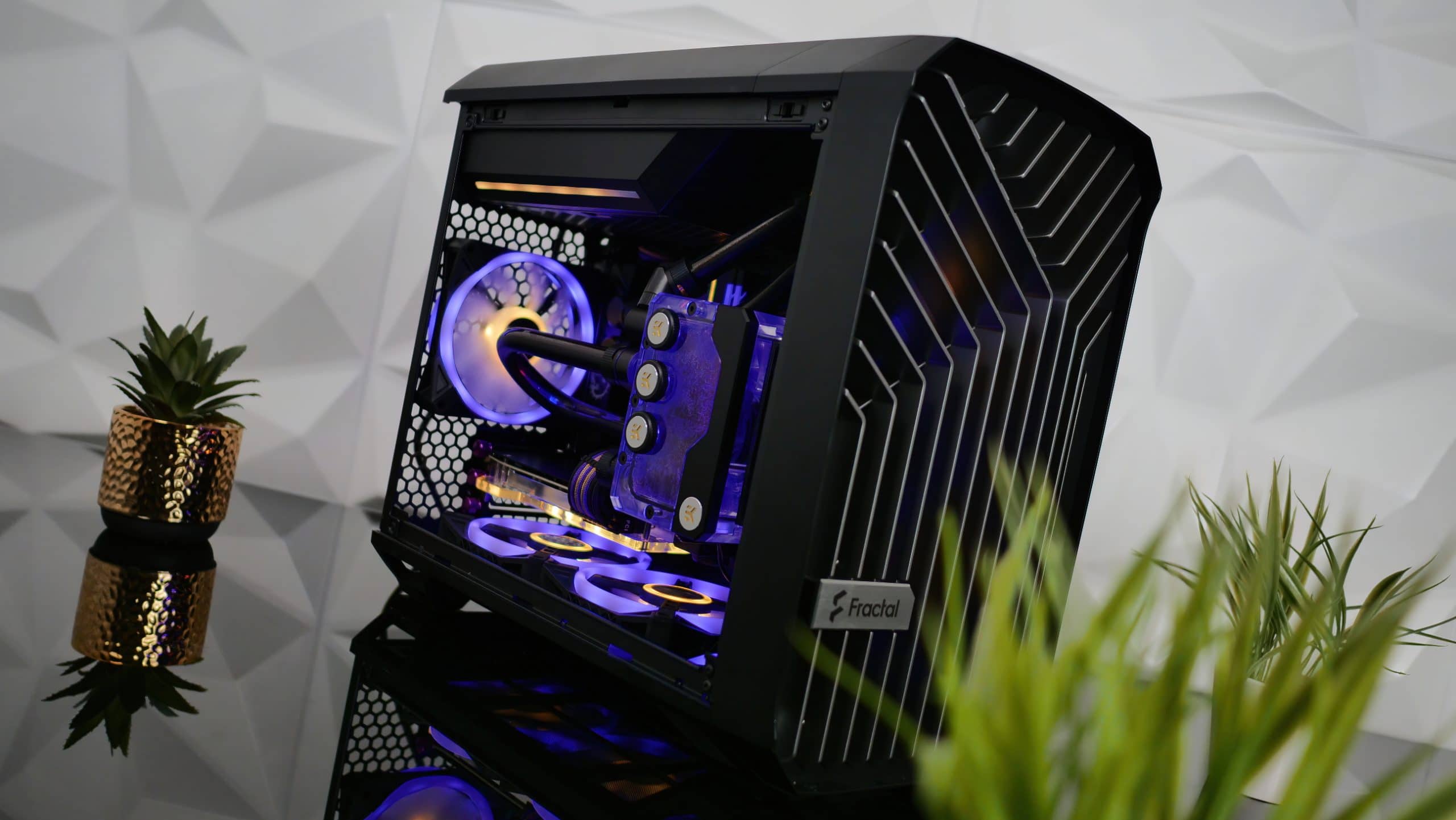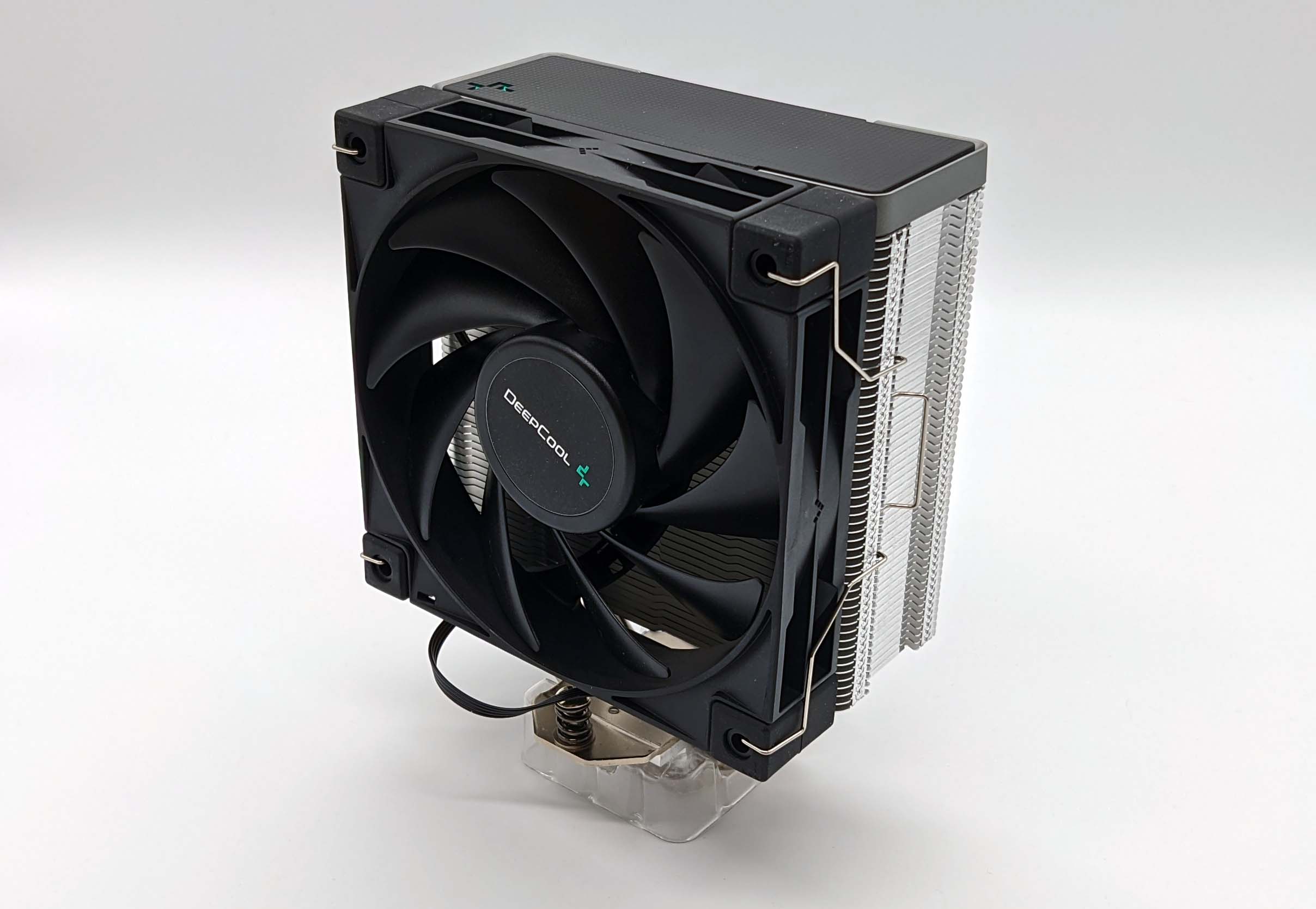can a modding cooler be efficient? – In one of the previous articles on cooling systems for central processors, we have already drawn your attention to the emerging trend among manufacturers to release coolers that are outwardly interesting and attractive to a potential buyer. The reason, as you remember, is quite simple and consists in the fact that the heat dissipation of modern processors, both Intel and AMD, is currently not increasing.
That is, the efficiency of the existing air coolers is sufficient for overclocking and stable operation of processors, including at sufficiently high frequencies (from 4 GHz). Meanwhile, tough competition in this segment and the need to fight for customers prompts eminent brands to announce and then launch into production such coolers, such as, for example, the hero of today’s review Thermaltake DuOrb (CL-P0464)… Its younger brother – a cooler for video cards with the same name, but with a different code CL-G0102 – we have already tested before and we are happy to once again note its high efficiency. Today’s article will tell you how the new product will show itself in the field of cooling central processors.
packaging and equipment
The novelty is supplied in a very beautiful vertically oriented packaging made of thick glossy cardboard. There are cutouts in the center of the front and back sides in the cardboard of the box, exactly according to the dimensions of the cooler and its base:

In addition, the front side contains a list of supported processors, as well as a separate label indicates compatibility with Socket AM2. The back and sides of the box are reserved for the description of the key features of the cooler and for a complete list of technical characteristics.
Inside the carton there is a plastic shell molded to the shape of the cooler and firmly fixing it:

announcements and advertisements
-14000р на RTX 3060 ASUS Dual
RTX 3060 MSI Gaming – a drain for a penny
RTX 3070 cheapest and all at Compeo.ru
-15000р на RTX 3060 MSI Ventus
Prices for video cards went down steeply
-14000р на RTX 3060 Gigabyte Eagle
Another top vidyaha with a mega discount
RTX 3060 – prices have gone down
First-hand Z590 motherboards at very good prices
RTX 3060 12Gb in XPERT.RU – be in time 🙂
Galaxy S20 family price crash 25% discount
RTX 3070 at XPERT.RU at the lowest prices
Lots of RTX 3090 in XPERT.RU
On top of the cooler fans are neatly closed with a plastic cover.
At the top of this package is a small box containing the accessories included in the package. Among the latter, the following components are included by the manufacturer:

- two guides for attaching the cooler to motherboards with an LGA 775 socket;
- universal backplate for motherboards for AMD processors of the K8 family;
- two fasteners and screws for installing a cooler on Socket AM2;
- installation instructions in several languages, including Russian;
- pressure plate and two screws with springs to it;
- four figured nuts and gaskets for them;
- bonus sticker Key 3;
- 1 gram bag of SilMORE thermal paste.
The cooler has already appeared on sale by now, and its recommended price is 59.9 US dollars.
design features
Thermaltake DuOrb’s construction is extremely original. I am more than sure that no one can just walk past the shelf in the store on which he lies. However, see for yourself:

Handsome, isn’t it? The cooler measures 202 x 106 x 86 mm and weighs 598 grams. The “skeleton” of the design of the new cooler is six copper heat pipes with a diameter of 6 mm, emerging from a copper plate at the base of the cooler:

The tubes are divided into two groups of three tubes each. Each of the three pipes in the group has its own section of ribs strung, and the principle of distributing radiators on the pipes has been chosen very competently. Two heat pipes coming out of the central part of the cooler base, which accounts for the most significant part of the heat load, pass along the largest diameter of the heatsink, which consists only of thin copper fins:

The next two tubes (if we move from the center of the base to its edges) run along a small circle of the radiator, which already consists of aluminum fins. Well, on a pair of the outermost tubes at the base, only small segments of an aluminum radiator are strung at all. Considering the relatively low weight of the cooler and the small area of the aluminum heatsinks, they could be made of copper, as it seems to me.
The structure is cooled from above by two 80mm fan impellers mounted on an aluminum frame:

The fans rotate at a constant speed of 2000 RPM, producing 37.67 CFM airflow and 24 dBA noise. The standard service life of the fans’ rolling bearings is 50 thousand hours. In addition, one fan is illuminated in red and the other is illuminated in blue. The photo will be shown below.
By its appearance, it is easy to guess that DuOrb is designed in such a way as to provide effective cooling not only for the central processor, but also for the elements of the space around the socket, as well as for RAM. The manufacturer depicts it schematically as follows:

It looks interesting. If only all this beauty would not fail even when cooling the central processor itself. Let’s check.
The base of the cooler is protected from scratches with a plastic wrap with a warning about its obligatory removal before installing the cooler. Having removed this film, you find a high-quality surface of the copper plate at the base:

True, upon closer examination, slightly polished traces from the cutter become visible:

The base surface is flat – the imprint of a thin layer of the thermal interface both on the glass and on the flat cover of the processor’s heat spreader is uniform.
The pipes in the copper base plate of the cooler lie in grooves, which increases the usable contact area of the heat pipes with the base:

There were no traces of soldering or hot melt glue on the edges of the plate and the tubes themselves, and in general I would like to note the extremely high-quality and neat assembly of the entire device. An aluminum plate is installed above the tubes, which is a support for the universal mounting plate for the cooling system. We will talk about the principles and methods of mounting a cooler in the next subsection of today’s article.





